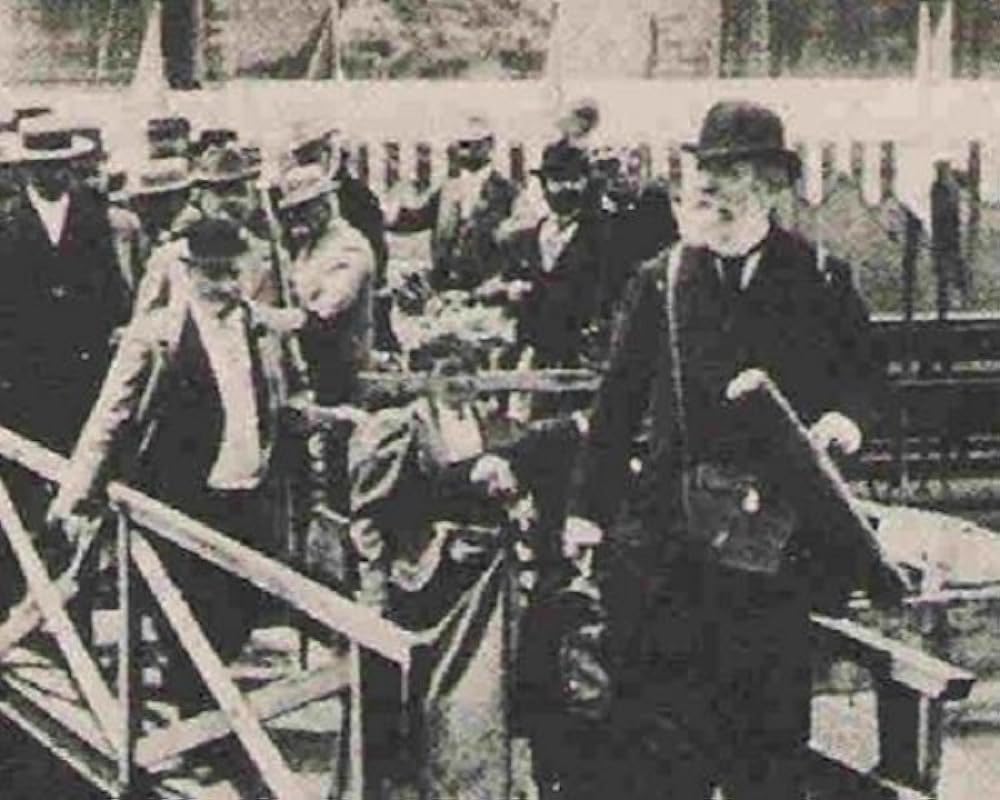Pierre Janssen – 22 February 1824 – 23 December 1907
Pierre Janssen – 22 February 1824 – 23 December 1907
I believe there might be a mistake in the dates you provided. Pierre Janssen was actually born on February 22, 1824, and he passed away on December 23, 1907. Pierre Janssen was a French astronomer who is known for his work in the field of astrophysics. He is particularly well-known for his contributions to the study of the solar spectrum and for his work on solar eclipses. Janssen is also recognized for his early use of spectroscopy in the study of celestial objects and for his role in the discovery of helium, an element first observed in the Sun’s spectrum during a solar eclipse.

Pierre Janssen – 22 February 1824 – 23 December 1907
French astronomer
Pierre Jules César Janssen (22 February 1824 – 23 December 1907), usually known as Jules Janssen, was a French astronomer who, along with English scientist Joseph Norman Lockyer, is credited with discovering the gaseous nature of the solar chromosphere, and with some justification the element helium.
Janssen was born in Paris ( During Bourbon Restoration in France ) into a cultivated family. His father, Antoine César Janssen ( born in Paris, 1780 – 1860 ) was a well known clarinettist from Dutch / Belgian descent ( his father emigrated from Walloon Brabant to Paris ). His mother Pauline Marie Le Moyne ( 1789 – 1871 ) was a daughter of the architect Paul Guillaume Le Moyne. [ 1 ]
Pierre Janssen studied mathematics and physics at the faculty of sciences. He taught at the Lycée Charlemagne in 1853, and in the school of architecture 1865 – 1871, but his energies were mainly devoted to various scientific missions entrusted to him. Thus in 1857 he went to Peru in order to determine the magnetic equator ; in 1861 – 1862 and 1864, he studied telluric absorption in the solar spectrum in Italy and Switzerland ; in 1867 he carried out optical and magnetic experiments at the Azores ; he successfully observed both transits of Venus, that of 1874 in Nhật Bản, that of 1882 at Oran in Algeria ; and he took part in a long series of solar eclipse-expeditions, e. g. to Trani, Italy ( 1867 ), Guntur, India ( 1868 ), Algiers ( 1870 ), Siam ( 1875 ), the Caroline Islands ( 1883 ), and to Alcossebre in Spain ( 1905 ). To see the eclipse of 1870, he escaped from the Siege of Paris in a balloon. [ 2 ] Unfortunately the eclipse was obscured from him by cloud. [ 3 ]
In the year 1874, Janssen invented the Revolver of Janssen or Photographic Revolver, instrument that originated the chronophotography. Later this invention was of great use for researchers like Etienne Jules Marey to carry out exhibitions and inventions.
Bạn đang đọc: Pierre Janssen – Wikipedia
In 1868 Janssen discovered how to observe solar prominences without an eclipse. While observing the solar eclipse of 18 August 1868, at Guntur, Madras State (now in Andhra Pradesh), British India, he noticed bright lines in the spectrum of the chromosphere, showing that the chromosphere is gaseous. Present in the spectrum of the Sun, though not immediately noticed or commented upon, was a bright yellow line later measured to have a wavelength of 587.49 nm. This was the first observation of this particular spectral line, and one possible source for it was an element not yet discovered on the earth. From the brightness of the spectral lines, Janssen realized that the chromospheric spectrum could be observed even without an eclipse, and he proceeded to do so.[citation needed]
On 20 October, Joseph Norman Lockyer in England set up a new, relatively powerful spectroscope. He also observed the emission spectrum of the chromosphere, including the same yellow line. Within a few years, he worked with a chemist and they concluded that it could be caused by an unknown element, after unsuccessfully testing to see if it were some new type of hydrogen. This was the first time a chemical element was discovered on an extraterrestrial body before being found on the earth. Lockyer and the English chemist Edward Frankland named the element after the Greek word for the Sun, ἥλιος (helios).[4][5]
Xem thêm: Nạp Gas Tủ Lạnh Electrolux Tại Hà Nội
At the great Indian eclipse of 1868 that occurred in Guntur, Janssen also demonstrated the gaseous nature of the red prominences, and devised a method of observing them under ordinary daylight conditions.[2][6] One main purpose of his spectroscopic inquiries was to answer the question whether the Sun contains oxygen or not. An indispensable preliminary was the virtual elimination of oxygen-absorption in the Earth’s atmosphere, and his bold project of establishing an observatory on the top of Mont Blanc was prompted by a perception of the advantages to be gained by reducing the thickness of air through which observations have to be made. This observatory, the foundations of which were fixed in the hard ice that appeared to cover the summit to a depth of over ten metres, was built in September 1893, and Janssen, in spite of his sixty-nine years, made the ascent and spent four days taking observations.[2][7]
In 1875, Janssen was appointed director of the new astrophysical observatory established by the French government at Meudon, and set on foot there in 1876 the remarkable series of solar photographs collected in his great Atlas de photographies solaires (1904). The first volume of the Annales de l’observatoire de Meudon was published by him in 1896.[2] (see also Meudon Great Refractor)
Janssen was the President of the Société Astronomique de France ( SAF ), the French astronomical society, from 1895 to 1897. [ 8 ]In 1884 he took part in the International Meridian Conference. [ 9 ]
Death, honors, and legacy
Source: https://suachuatulanh.org
Category : Nạp Gas Tủ Lạnh
Có thể bạn quan tâm
- Nạp Gas Tủ Lạnh Bosch Tại Huyện Gia Lâm (13/12/2023)
- Nạp Gas Tủ Lạnh Sanyo Tại Cầu Giấy (13/12/2023)
- Nạp Gas Tủ Lạnh Fagor Quận Hoàn Kiếm (13/12/2023)
- Nạp Gas Tủ Lạnh Mitsubishi Quận Ba Đình (13/12/2023)
- Nạp Gas Tủ Lạnh Electrolux Quận Hoàn Kiếm (13/12/2023)
- Nạp Gas Tủ Lạnh Hitachi Huyện Thanh Trì (13/12/2023)









![Bảo Hành Tủ Lạnh Sharp Ủy Quyền Tại Hà Nội [0941 559 995]](https://suachuatulanh.org/wp-content/uploads/bao-hanh-tu-lanh-sharp-2-300x180.jpg)